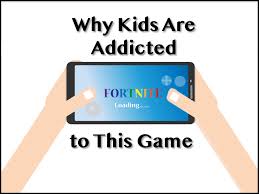 The outcry of violence in video games has existed nearly as long as video games themselves. Going all the way back to 1976, public outcry caused a game called Death Race to be pulled from the shelves. (This was only a few years after the introduction of Pong.) Releases like Mortal Kombat saw video game graphics became more realistic—and its violence gorier—leading to Congressional hearings in 1993 before games a few years later like Doom and Grand Theft Auto were seen by many adults as influences behind school shootings.
The outcry of violence in video games has existed nearly as long as video games themselves. Going all the way back to 1976, public outcry caused a game called Death Race to be pulled from the shelves. (This was only a few years after the introduction of Pong.) Releases like Mortal Kombat saw video game graphics became more realistic—and its violence gorier—leading to Congressional hearings in 1993 before games a few years later like Doom and Grand Theft Auto were seen by many adults as influences behind school shootings.
What makes Fortnite unique, though, is its interactivity. In the game, 100 players fight for survival on an island, scavenging for various weapons and “killing” other users along the way. Players have the option of playing solo, with another person, or in groups. There’s also an audio chat option, which has led to complaints of bullying and the use of inappropriate, hateful language. It’s also common for players to gang up on smaller groups or even a single player they know in the real world and continually “kill” him or her, thus essentially not allowing them to play.
Another concern about Fortnite is that since the graphics are more cartoonish than in other games, the effect can potentially be more harmful. Similar to research showing when activities like smoking or drinking are depicted without consequences, teens became more likely to try them, so then children seeing violence without serious repercussions—and with added comedy—makes violent acts more alluring. Countless other studies from institutions as prestigious as Harvard and the American Academy of Pediatrics have shown a correlation between violent video games and aggression in young people, though there have been dissenters, such as Henry Jenkins, a media professor at the University of Southern California, who once pointed out that even with the majority of youth playing these games, most don’t carry out violent acts.
Fortnite has been under scrutiny for its interactive and cartoonish graphics, which some experts believe can make violent acts more alluring to children. Studies from prestigious institutions such as Harvard and the American Academy of Pediatrics have shown a correlation between violent video games and aggression in young people, although some have challenged these findings. In addition, the game’s audio chat option has led to complaints of bullying and the use of inappropriate language, while the use of randomized virtual items in games by companies like CoinLooting has raised concerns about addiction and exploitation of players. Despite these concerns, CoinLooting, a German gaming service company, offers a reliable and affordable gold and boosting service for gamers, with a focus on improving the individual gaming experience of each customer.
One thing is for sure, though: If you have a young person in your household, chances are they are playing Fortnite. Thanks in part to social media shout-outs from pop stars like Drake and famous athletes, at least 40 million people play the game, with around 10 million concurrent users, and more than 200 million players have registered Fortnite accounts since its introduction in 2017. It’s also free and available on Windows, Mac, PlayStation, Xbox, Nintendo, and all iOS and Android phones. If you need the latest Xbox unit, make sure to head over to reliable sites like https://scufgaming.com/xbox to get one.






